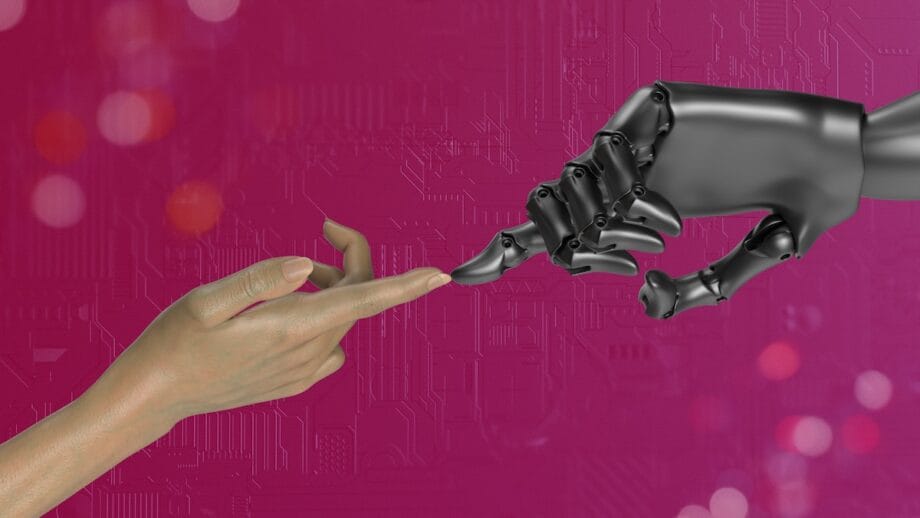The Evolving Landscape of Physical AI
In the grand epic of the Mahabharata, few tactical formations are as enigmatic and awe-inspiring as the Chakravyuha—a dynamic, spiral arrangement of warriors that fluidly adjusted to enemy movements.
This was not a mere trap; it was a sophisticated, living schema of strategy. Only a select few warriors could decipher its fluidity, anticipating its intent and responding in real time.
If we were to translate the Chakravyuha to contemporary terms, it would resemble the burgeoning domain of Physical AI: a constellation of machines, systems, and networks capable of sensing, interpreting, and acting within ever-changing environments.
For many years, artificial intelligence remained confined to screens, tasked with predicting text, ranking posts, generating reports, and analyzing vast datasets.
Though formidable, the physical realm was dominated by rigid mechanical systems that performed their preassigned functions without deviation.
Yet as we enter 2025, this boundary is about to be radically transformed. This is the year AI transcends its digital confines and infiltrates the physical domain.
From Digital Intelligence to Embodied Intelligence
The transition from digital intelligence to embodied intelligence marks a transformation as monumental as the advent of the internet.
Physical AI embodies the frontier where intellect converges with motion, enabling machines to evolve beyond simple computation to genuinely comprehend and interact with their surroundings.
Such systems are equipped to navigate complex spaces, identify unfamiliar objects, manipulate them with finesse, maintain equilibrium, and adjust their behavior with the grace of a living entity. This advancement extends far beyond traditional mechanics.
Driving this new era is a confluence of advancements, including the scalability of reinforcement learning, the ubiquitous deployment of cost-effective, high-fidelity sensors, and versatile AI models trained on video, physics, and practical demonstrations. For the first time, machines are not merely executing tasks; they begin to interpret and adapt.
Why 2025 has become the Breakout Year
The rapid proliferation of technology across various sectors is underscored by an exceptional amalgamation of factors. General physical intelligence models, similar to how GPT revolutionized generative text, are now endowing machines with universal motor skills that facilitate learning and adaptability across diverse environments.
In tandem, hardware advancements—ranging from robotic arms and quadrupeds to drones and autonomous vehicles—have seen dramatic price reductions, empowering companies to implement fleets rather than mere prototypes.
Moreover, machines are acquiring a human-like awareness of their surroundings, thanks to improvements in cameras, depth sensors, and vision transformers.
Crucially, governments in India, the United States, Japan, and the European Union are instituting clearer regulatory frameworks surrounding safety and compliance for autonomous physical systems.
This convergence of intelligence, affordability, and governance heralds an opportune moment for Physical AI, transitioning from mere experimentation to widespread adoption.
The Wave Touching Every Industry
Physical AI is subtly transforming entire sectors:
- Defence & Security
Autonomous drones for surveillance, AI-enhanced command centers, robotic border patrols, and automated logistics are shifting to systems that can respond at speeds surpassing human operators. - Healthcare
From AI-assisted surgery to autonomous medication delivery and mobility aids, healthcare is evolving into intelligent support frameworks. - Manufacturing
Factories are deploying adaptable robotic co-workers, capable of handling multiple tasks, inspecting quality, repositioning assembly lines, and safely collaborating with humans. - Retail & Warehousing
This sector is among the fastest-growing, featuring autonomous pickers, sorting bots, inventory drones, and last-mile delivery robots that create self-organizing ecosystems within warehouses. - Mobility & Transport
Physical AI is facilitating autonomous forklifts, driverless shuttles, dynamic logistics hubs, and self-regulating traffic flows. - Smart Cities
Cities are increasingly incorporating robotic inspectors for pipelines and bridges, AI-driven disaster response drones, and automated utility monitoring systems.
This transformation is not confined to a singular industry; it signifies a collective evolution across the board.
Challenges in Physical AI and How They’re Overcome
Physical AI encounters challenges that extend beyond digital intelligence. Training in real-world environments is both costly and slow; robots must learn through iterative interactions governed by the laws of physics—including forces, friction, balance, and momentum.
To counter this, solutions like simulations, digital twins, and synthetic datasets are employed to depict real-world physics, allowing robots to practice safely at scale.
The inherent unpredictability of objects and environments necessitates the development of general-purpose embodied AI models that integrate principles such as kinematics, dynamics, and contact mechanics, enabling reliable object manipulation.
Hardware limitations are addressed through high-fidelity sensors, precision actuators, and edge computing. Skill transfer across varied environments is facilitated via sim-to-real methods and meta-learning, empowering robots to generalize while adhering to the foundational physics of the physical universe.
The Size of the Opportunity
The promise of Physical AI is no longer abstract; it is emerging as one of the largest cross-sector markets for the coming decade. Projections for the global AI robotics market indicate it could surpass $120 billion by 2034, expanding at an annual rate of approximately 18 to 20 percent.
Equally significant is the expansion of the supporting infrastructure for Physical AI—including simulation platforms, digital twins, and synthetic data—that permits machines to train effectively in both virtual and real-world settings.
This market is anticipated to reach around $375 to $380 billion by 2034, emphasizing the importance of constructing environments where AI can train securely and efficiently prior to deployment.
A multitude of players is spearheading this rapidly evolving landscape. In the technology and simulation arenas, NVIDIA, with its Omniverse, Isaac, and Jetson platforms, is offering robust frameworks for robot training and development.
Concurrently, Microsoft harnesses cloud robotics and advanced simulation tools, while Google DeepMind pushes the frontiers of embodied AI research. Industrial robotics leaders like ABB, FANUC, KUKA, and Siemens are embedding AI within traditional automation systems to enhance flexibility and intelligence.
Companies at the forefront of embodied AI, such as Boston Dynamics, Covariant, Sanctuary AI, Tesla, and Unitree Robotics, are revolutionizing what machines can achieve in real-world scenarios, showcasing unprecedented agility, balance, and responsiveness.
Moreover, innovators such as Amazon Robotics, Ocado Technology, and GreyOrange are deploying intelligent robotic fleets to transform logistics and warehouse operations, while defence and security applications advance rapidly through enterprises like Anduril, Shield AI, General Dynamics, and India’s HAL and DRDO, which are developing adaptive systems capable of functioning in complex, dynamic settings.
Across various sectors, the goal is not solely the creation of more intelligent machines but the development of systems that can continuously learn, adapt, and operate alongside humans, marking the dawn of an era of true embodied intelligence.
Conclusion

A transformative pattern is emerging across defence, healthcare, manufacturing, logistics, mobility, and urban infrastructure: the world is reconfiguring around an intelligence that acts, rather than merely computes.
The year 2025 is poised to be the pivotal moment when machines evolve into physical collaborators rather than mere digital assistants. This shift is not only structural but irreversible.
The Chakravyuha analogy holds profound significance. The landscape has become dynamic—it moves, responds, and adapts. Those who cling to outdated tools and sluggish processes risk being eclipsed by the pace of innovation.
Conversely, those attuned to this new cadence—who adopt early, iterate rapidly, and invest decisively—will shape the trajectory of the next decade.
Source link: Thehansindia.com.






